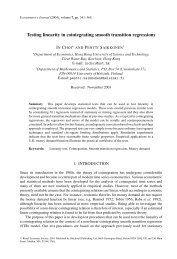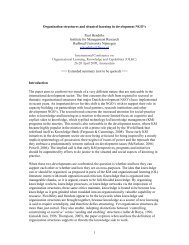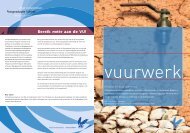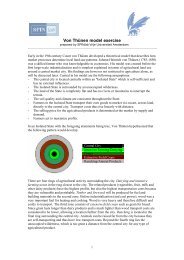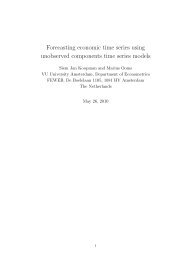Kees Boersma; Peter Groenewegen
Kees Boersma; Peter Groenewegen
Kees Boersma; Peter Groenewegen
You also want an ePaper? Increase the reach of your titles
YUMPU automatically turns print PDFs into web optimized ePapers that Google loves.
4.2. …in relation to city management and safety-regions policy…<br />
For the understanding of the organization of urban safety, it is crucial to look at the<br />
way the emergency response rooms are related to the city/municipality-management<br />
and the safety-regions. In 2007 the Dutch government introduced 25 different safety-<br />
regions as part of the national reorganization of safety agencies (see figure 1).<br />
Figure 1: Safety regions in the Netherlands.<br />
Source: http://www.rampenhulpverlening.nl/vbd/vbdveiligheidsregios.html (the white oval points<br />
out the safety-region Amsterdam-Amstelland and is our addition to the figure).<br />
Amsterdam is the most important city in the safety-region Amsterdam-Amstelland.<br />
One of the effects of the introduction of the safety-regions has been the „co-location‟<br />
of the emergency response rooms. The „co-location‟, as we already mentioned, means<br />
that the emergency response rooms of the three disciplines involved are housed in the<br />
same room. Interesting enough, the Dutch capital city Amsterdam (the central city of<br />
one of the 25 safety-regions) is the only city in the Netherlands in which the three<br />
disciplines are still located on separate locations spread over the city. The discussion<br />
about co-location in Amsterdam was and still is not an unproblematic issue. In the<br />
public report on „Physical Safety‟ (2004) of the municipality of Amsterdam we can<br />
read:<br />
9






